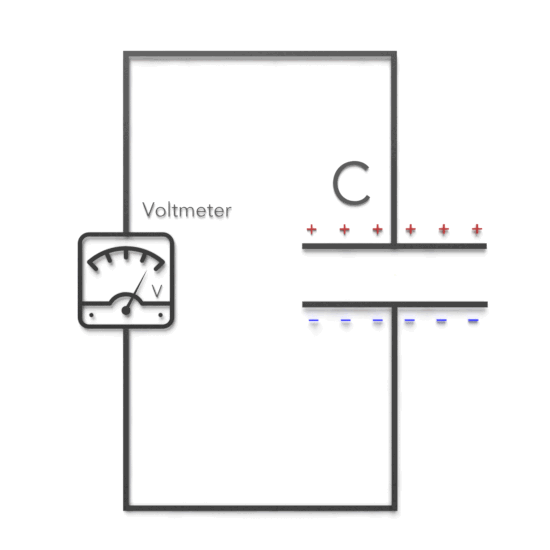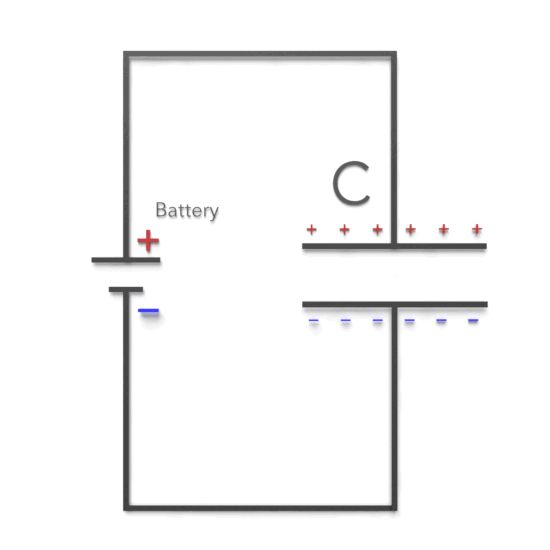30-second summary
Dielectrics
In general, a dielectric is an electrical insulator with high permittivity, which means with high polarizability.
Dielectrics have many applications, but the most significant use is in capacitors. In many capacitors, there is an insulating material such as paper or plastic between the plates. Such a material, called a dielectric, can be used to maintain a physical separation of the plates.
Placing a solid dielectric between the plates of a capacitor serves three functions.
- Mechanical separation
- Electrical isolation – higher voltage possible
- Electric field reduction – higher capacitance
See also: Capacitance
See also: Electric polarization
See also: Permittivity
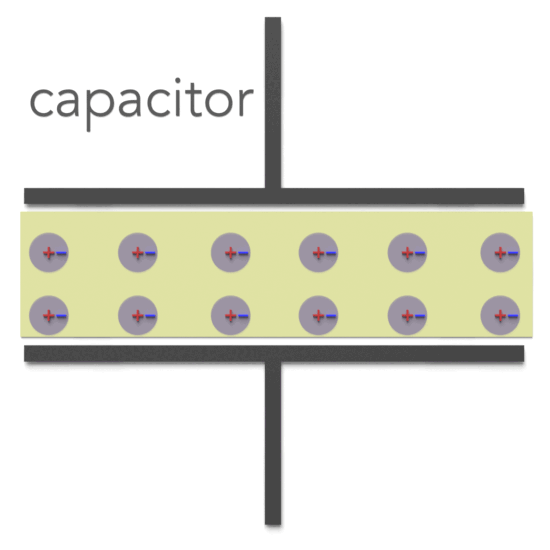
Dielectrics
In general, a dielectric is an electrical insulator with high permittivity, which means with high polarizability. When a dielectric material is placed in an electric field, electric charges do not flow through the material as they do in an electrical conductor because they have no loosely bound or free electrons that may drift through the material, but instead, they shift only slightly, from their average equilibrium positions, causing dielectric polarization.
Dielectric materials can be solid, liquid, or gaseous, and their electrical properties depend on factors such as their chemical composition, temperature, and frequency of the electrical field. Common examples of solid dielectric materials include ceramics, glass, plastics, and certain types of crystals, such as quartz.
The electrical properties of dielectric materials are characterized by their permittivity, which is a measure of the material’s ability to store electrical energy in an electric field. Dielectric materials with a high permittivity can store more electrical energy than those with a low permittivity. The permittivity of a material also determines its capacitance, which is the ability of a material to store electrical energy in a capacitor.
Electric Polarization
In contrast to metals, where charges are free to move throughout the material, in dielectrics, all the charges are attached to specific atoms and molecules. These charges are known as bound charges. These charges are able, however, can be displaced (polarized) within an atom or a molecule by an application of an electric field.
Electric polarization is a slight relative shift of positive and negative electric charge in opposite directions within atoms or molecules of an insulator, or dielectric, induced by an external electric field.
These microscopic displacements are not as dramatic as the rearrangement of charge in a conductor, but their cumulative effects account for the characteristic behavior of dielectric materials. When an external electric field is applied to a dielectric material, this material becomes polarized, which means that it acquires a dipole moment. This property of dielectrics is known as polarizability. When an electric field acts on a molecule, the positive charges are displaced along the field, while the negative charges are displaced in a direction opposite to that of the field. The effect is, therefore, to pull the opposite charges apart, i.e., to polarize the molecule. There are three types of polarization:
- Electronic polarization. Here when the external field is applied, the electron clouds of atoms are displaced with respect to the heavy nuclei within the dimensions of these atoms. This is called electronic polarization.
- Orientational polarization. Orientational polarization is a polarization that is either inherent to molecules, or can be induced in any molecule in which the asymmetric distortion of the nuclei is possible (distortion polarization). Polar molecules are those types of dielectrics in which the chances of positive and negative molecules colliding are nil or zero. This is because they are all asymmetrical in form. H2O is a typical example. When there is no electric field, the electric dipole moment of these molecules moves in an unpredictable direction. The average dipole moment is 0 as a result of this. If there is an external electric field, the molecules will assemble in the same direction as the electric field.
- Ionic polarization. Ionic polarization is polarization caused by relative displacements between positive and negative ions in ionic crystals (for example, NaCl).
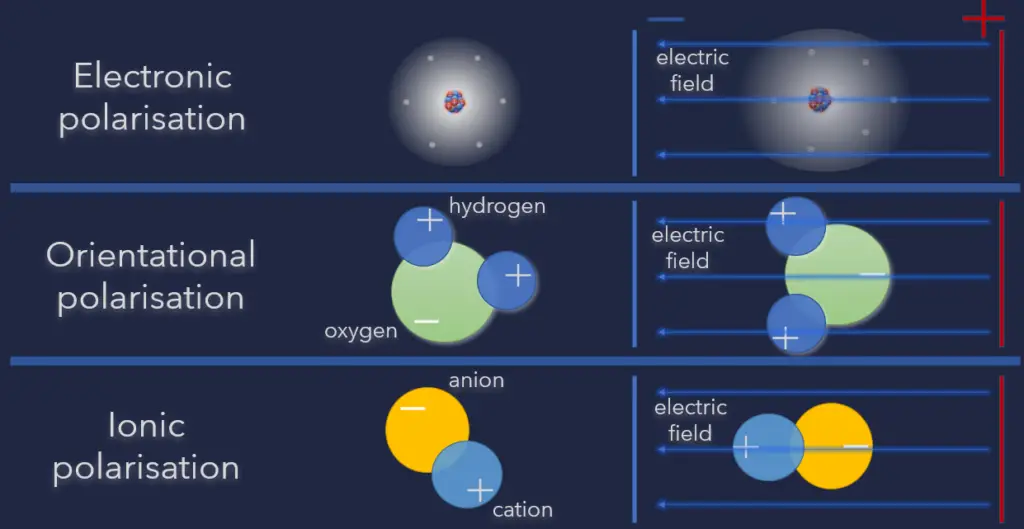
Types of Dielectrics
Depending on the separation between the center of gravity of positive and negative charges, the material can be classified as polar or non-polar dielectric material.
Polar dielectrics: Polar dielectrics are those types of dielectrics in which the center of gravity of positive charge is finitely separated from that of negative charge, resulting in an electric dipole with some dipole moment. This is permanent. H2O, NO2, NH3, and other gases are examples. When there is no electric field, the electric dipole moment of these molecules moves in an unpredictable direction. The average dipole moment is 0 as a result of this. If there is an external electric field, the molecules will assemble in the same direction as the electric field.
Non-polar dielectrics: Unlike polar dielectrics, the center of positive and negative charge in non-polar molecules does not coincide, i.e., zero. There is no longer any persistent (or inherent) dipole moment in the molecule. Examples include O2, N2, H2, and others. Monoatomic gases like He, Ne, Ar are also non-polar. CO2, due to its linearly symmetric structure, is also non-polar.
Application of Dielectrics
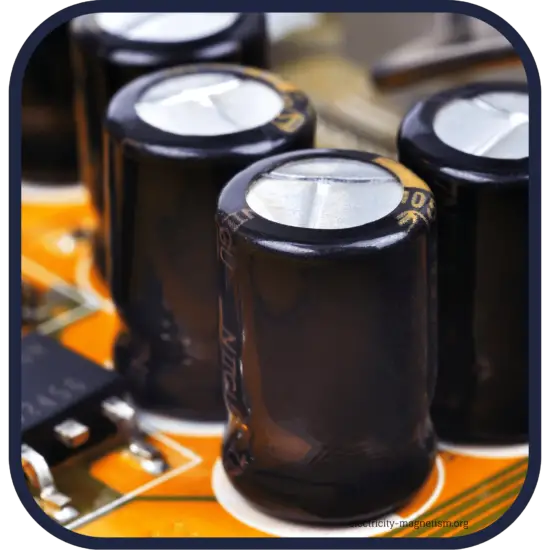
Dielectrics have many applications, but the most significant use is in capacitors. Here are some common applications of dielectrics:
- Capacitors: Dielectric materials are used in the construction of capacitors to provide electrical insulation between the conductive plates and to increase the capacitance of the capacitor.
- Electrical insulation: Dielectric materials are used to insulate electrical wires and components, preventing electrical current from flowing where it is not intended to go. This is important for safety and to prevent electrical interference in electronic devices.
- High-voltage power transmission: Dielectric materials are used to insulate high-voltage power lines, transformers, and other electrical equipment to prevent electrical arcing and other forms of electrical discharge.
- Optical materials: Some dielectric materials are used in optical applications due to their transparency to visible and infrared light. They are used as coatings for lenses and mirrors to improve their reflectivity and prevent degradation.
- Medical applications: Dielectric materials are used in medical devices such as pacemakers and defibrillators to insulate electrical components and prevent interference with biological tissues.
- Energy storage: Dielectric materials are used in capacitors and other energy storage devices to store and release electrical energy.
Overall, dielectric materials are essential in many electrical, optical, and medical applications due to their unique electrical and physical properties.
Dielectric Constant
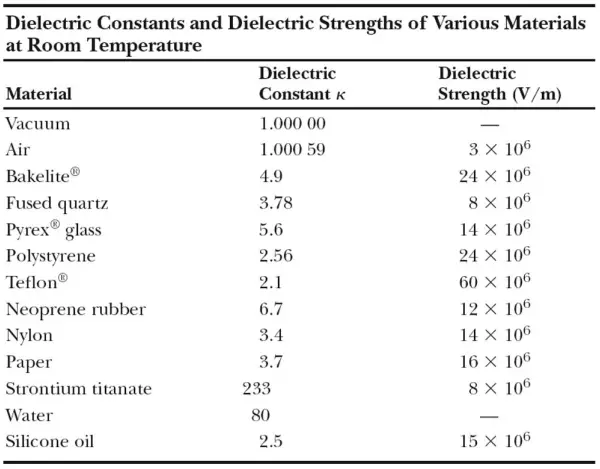
The dielectric constant of an insulator measures the ability of the insulator or dielectric to store electric energy in an electrical field. The dielectric constant, which is denoted by κ (kappa), is the same quantity as the relative permittivity denoted by εr . The dielectric constant is still used but deprecated by standards organizations in engineering.
The dielectric constant of a vacuum is unity by definition. Because air is mostly empty space, its measured dielectric constant is only slightly greater than unity. Even common paper can significantly increase the capacitance of a capacitor, and some materials, such as strontium titanate, can increase the capacitance by more than two orders of magnitude.
In a region completely filled by a dielectric material of dielectric constant κe, all electrostatic equations containing the permittivity constant ε0 are to be modified by replacing ε0 with κeε0 .
The greater the dielectric constant, the greater the amount of charge that can be held. The capacitance of a capacitor is increased by a factor of the dielectric constant when the gap between the plates is completely filled with a dielectric.
C = εrC0 = κeC0
where C0 is the capacitance between the plates with no dielectric.
Dielectric Strength
The dielectric strength of insulating material is defined as the highest electric field strength that it can tolerate intrinsically without losing its insulating characteristics. In a sufficiently strong electric field, the insulating properties of an insulator break down, allowing the flow of charge. Dielectric strength is measured as the maximum voltage required to produce a dielectric breakdown through a material.
In SI, the unit of dielectric strength is volts per meter (V/m). It is also common to see related units such as volts per centimeter (V/cm), megavolts per meter (MV/m), and so on.
This quantity is affected significantly by temperature, trace impurities, small irregularities in the metal electrodes, and other factors that are difficult to control. For this reason, we can give only approximate figures for dielectric strengths. The dielectric strength of dry air is about 3 MV/m. The table below shows the dielectric strengths of a few common insulating materials. Note that the values are all substantially greater than the value for air.
Dielectric strength is very important for dielectrics in capacitors. The introduction of a dielectric is also to limit the potential difference that can be applied between the plates to a certain value Vmax, called the breakdown potential. If this value is substantially exceeded, the dielectric material will break down and form a conducting path between the plates. A few such values are listed in the table below.
Dielectrics in Capacitors
Dielectrics have many applications, but the most significant use is in capacitors. In many capacitors, there is an insulating material such as paper or plastic between the plates. Such a material, called a dielectric, can be used to maintain a physical separation of the plates.
Placing a solid dielectric between the plates of a capacitor serves three functions.
- Mechanical separation
- Electrical isolation – higher voltage possible
- Electric field reduction – higher capacitance
First, it solves the mechanical problem of maintaining two large metal sheets at a very small separation without actual contact.
Second, using a dielectric increases the maximum possible potential difference between the capacitor plates. Any insulating material, when subjected to a sufficiently large electric field, experiences a partial ionization that permits conduction through it. This is called dielectric breakdown. Note that the dielectric strength of air is approximately 3 kV/mm. Many dielectric materials can tolerate stronger electric fields without breakdown than can air. Thus using a dielectric allows a capacitor to sustain a higher potential difference and so store greater amounts of charge and energy.
Third, experimentally, it was found that capacitance C increases when the space between the conductors is filled with dielectrics. The polarization of the dielectric by the applied electric field increases the capacitor’s surface charge for the given electric field strength. The application of an electric field between the two plates induces some opposite charge on the dielectric, which opposes the applied electric field. The net result is that the electric field inside the dielectric (which fills the area between the plates) is reduced, allowing the capacitor to store more charge.
To see how this happens, suppose a capacitor has a capacitance when there is no material between the plates. When a dielectric material is inserted to completely fill the space between the plates, the capacitance increases to:
C = κeC0
where κe is called the dielectric constant.
As can be seen, there are two cases. If the potential difference between the plates of a capacitor is maintained, as by battery B, the effect of a dielectric is to increase the charge on the plates. (b) If the charge on the capacitor plates is maintained, as in this case, the effect of a dielectric is to reduce the potential difference between the plates.
